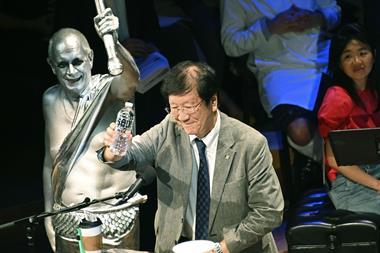Cheese, ears, liquid cats, didgeridoos - science goes to some strange places to make the world better
The highlight of the scientific calendar, the Nobel prize announcements, is upon us. Or it will be by the time you read this. As I write, the build-up is just beginning and rumours, guesses and sweepstakes abound in labs and offices around the world. Alas, scheduling for this print issue means I am writing this article about 10 days before the announcements. Dare I go on record with some thoughts about who the winners might be? No thanks. You can get the full write up in our November issue, where we can’t possibly get it wrong.
However, I am pleased that I can talk about the recent winners of the Ig Nobel awards – the prizes awarded each year for ‘research that makes people laugh and then think’. Described by Nature as having ‘little cash but much cachet’ the Ig Nobels are a welcome stitch in the tapestry of award programmes. This year’s winners include a study of why old men have big ears; fMRI that reveals why some people don’t like cheese; and how playing didgeridoos can help sufferers of obstructive sleep apnoea syndrome. The winner of the Ig Nobel for physics – ‘On the rheology of cats’ by Marc–Antoine Fardin – is possibly the most accessible explanation of the discipline I have ever encountered and is littered with some brilliant pictures (read Sarah Houlton’s piece to find out more).
The Ig Nobels don’t poke fun at science, they simply revel in good science with good humour. A look through the winners will reassure you that not only is the science sound but also the knowledge gained has the potential to do more than rationalise one’s response to Cheddar. The winners of the 2011 Ig Nobel prize for chemistry determined the ideal concentration of airborne wasabi to rouse someone from sleep in around a minute. Why is this important? Deaf people might sleep through the sirens of conventional fire alarms, but the pungent odour of wasabi will wake even the deepest sleeper.
I’ve never met a scientist who, in the face of this, has decided to throw in the towel
Scientists are adept at spotting the significance of weird phenomena and digging through absurdity to find something of value. We could say that scientists spend their lives making sense of the absurd or at the very least battling against it. Philosophically speaking, absurdism is neatly summarised as the human desire to find meaning in life while being utterly incapable of actually finding it. The universe is big, really big, and alas we will never know the answers to life, the universe and everything. And yet I’ve never met a scientist who, in the face of this, has decided to throw in the towel.
Albert Camus (a Nobel laureate himself as well as an absurdist) posited that, once one becomes aware of absurdity, only three responses become possible: suicide, faith or acceptance. The first alleviates the condition by ending it all; the second by creating a reality beyond the absurd where meaning exists; and the third by establishing the freedom to construct meaning for ourselves, forging our own sense of purpose in the process. Crudely put, you can overcome absurdity through death, religion or science. Camus, as you might expect, went with the latter.
We already know that science improves our lives materially in ways both large and small – energy, food, shelter, water, cling film, jet packs. And although I’ve been a little flippant for literary effect, these benefits are real, life saving and world changing. Discoveries come from the strangest places – graphene anyone? – and it’s the scientist doggedly reaching for a ruler to measure our progress through the abyss that makes it all possible.
While the Nobel prize gives us the opportunity to acknowledge the light science has shone on the world around us, let’s not forget that science also makes living through all this absurdity that little bit brighter too.












No comments yet